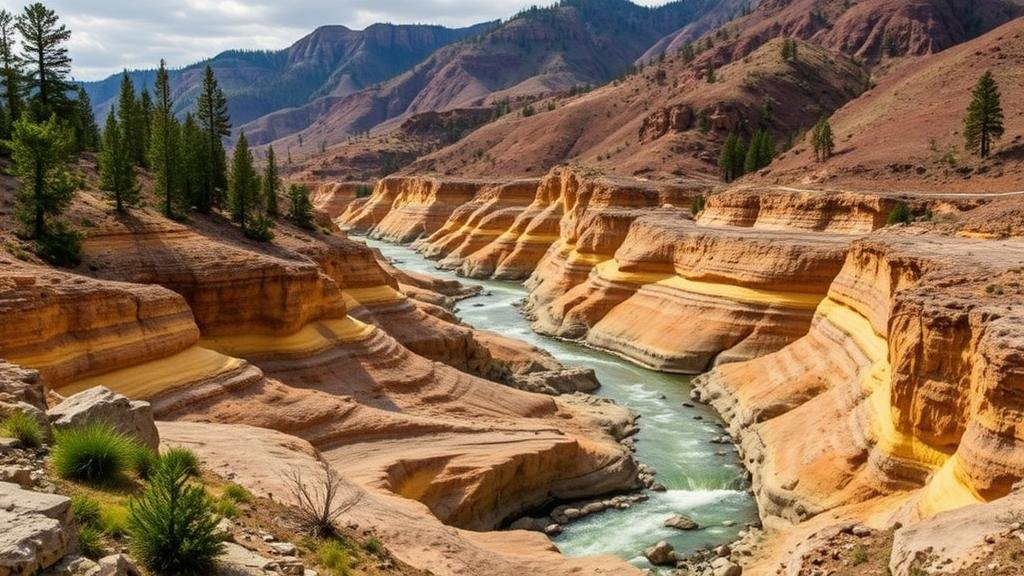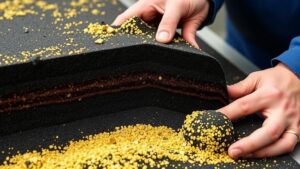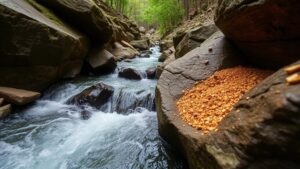Understanding Gold Flow Patterns in Placer Deposits
Understanding Gold Flow Patterns in Placer Deposits
Gold flow patterns in placer deposits are essential for understanding how gold is transported, concentrated, and subsequently recovered. These patterns result from geological processes, hydrodynamic forces, and sedimentary environments. This article explores the mechanisms behind gold flow in placer deposits, offering insights into their formation, distribution, and extraction methods.
What Are Placer Deposits?
Placer deposits are accumulations of valuable minerals formed by the mechanical concentration of that material due to the action of water, wind, or ice. term placer originates from the Spanish word placer, meaning pleasure, reflecting the ease with which these deposits can often be mined. Primarily, placer deposits contain gold, but they may also yield other minerals such as diamonds, tin, and gemstones.
Mechanisms of Gold Transport
Gold is typically found in its elemental form and is often located in quartz veins that traverse bedrock. Once gold-bearing rock is eroded, various hydrodynamic and mechanical processes facilitate the transportation of gold particles into alluvial or fluvial environments. primary mechanisms of gold transport include:
- Weathering and Erosion: Chemical weathering breaks down host rocks, allowing gold to be liberated. Physical erosion further transports these particles.
- Hydraulic Sorting: In river systems, the flowing water preferentially moves smaller materials while denser gold particles settle due to gravity.
- Particle Interaction: Gold particles can collide with other materials, influencing how they settle based on factors like size and density.
Factors Influencing Gold Flow Patterns
Several key factors govern the flow patterns of gold within placer deposits. Recognizing these factors is crucial for effective mining strategies:
- Fluid Dynamics: The velocity of water flow significantly influences the movement of sediments. Higher velocities can transport gold over greater distances before depositing it.
- Grain Size and Shape: The size, shape, and density of gold particles determine how they interact with other sediments.
- Topography: The terrain features, such as bends and obstructions in riverbeds, impact how gold is deposited.
- Seasonal Variations: During flood events or seasonal changes, the flow rate and sediment load can drastically alter previously established gold patterns.
Case Studies of Gold Flow Patterns
Exploring specific examples of gold flow patterns in placer deposits helps illustrate these principles effectively:
- The California Gold Rush: This historical event showcased varying flow patterns where gold was concentrated in river bends and floodplain areas, illustrating the importance of understanding hydrodynamic processes.
- Klondike Gold Fields, Canada: The specific geological formations and flow dynamics of the Klondike River provided invaluable insights into gold deposition, with many miners focusing on streambed gravels for recovery.
Extraction Techniques
Understanding gold flow patterns directly informs extraction techniques used in placer mining. Some common methods include:
- Panning: This traditional method involves using a shallow pan to separate gold from sediments using waters flow.
- Sluicing: Sluices create a controlled water flow, allowing heavier gold particles to settle while lighter materials are washed away.
- Dredging: Larger operations utilize dredges to excavate submerged placers, which are then processed to extract gold.
Challenges and Considerations
Despite advancements in mining techniques, several challenges persist in placer mining related to understanding gold flow patterns:
- Environmental Impact: Mining can disrupt ecosystems and alter water flow, impacting sediment transport.
- Regulatory Concerns: Many jurisdictions have laws governing placer mining, necessitating knowledge of local regulations.
- Resource Competition: As placer deposits become more productive, competition and environmental pressures intensify.
Conclusion and Actionable Takeaways
In summary, understanding gold flow patterns in placer deposits requires a multidisciplinary approach that encompasses geology, fluid dynamics, and environmental science. Key takeaways include:
- Recognize the significance of natural processes such as erosion and sediment transport in gold deposition.
- Apply knowledge of topographic and hydrodynamic influences to identify optimal mining locations.
- Stay informed on environmental regulations and best practices to minimize ecological impact while maximizing resource extraction.
By comprehensively understanding these factors, miners and researchers can enhance their strategies for the effective recovery of gold from placer deposits.



